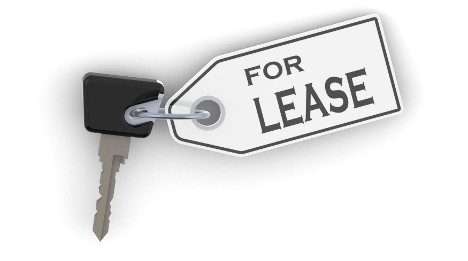Lease incentives: ‘Taking the hit now’ is safer route

Creeping up.
Forms of that phrase were used by both Kelley Blue Book and Jonathan Banks of NADA Used Car Guide to describe the current state of new-car incentives.
And one area, in particular, could be an interesting spot for the industry, if not done right: lease incentives.
While a “throwback” vibe is in full vogue within pop culture, the same can’t be said for the auto business, at least in one regard: the lease subvention of the late 1990s is probably worth not repeating.
Overall incentive growth pattern
Measuring it against actual transaction prices, KBB shared a data set with Auto Remarketing indicating that incentive spending as a percentage of ATP has reached 9.0 percent so far this year. Back in 2012, it was at a recent low of 7.9 percent and has climbed every year since.
Automakers certainly haven’t gone even back to the mid- to late-2000s, when ratios were well above 9 percent (i.e. 9.7 percent in 2005 and 2008; 9.4 percent in 2009).
But as KBB noted in a message to Auto Remarketing, the figures are “creeping back up.”
Meanwhile, NADA Used Car Guide shared J.D. Power data showing that incentives — measured as a percentage of MSRP — have climbed from 8.3 percent in 2011 to 9.1 percent for 2015.
Year-to-date, they’re at 9.6 percent, up from 8.7 percent through the same period of last year.
“Incentives, since 2011 essentially, have been creeping up every year, helping drive the strong new-vehicle market that we’ve seen,” Banks said during a press conference here at the NADA Convention & Expo this past weekend.
Regarding the year-to-date measure of incentives-against-MSRP, Banks added: “A lot of analysts say 10 percent is a dangerous number. I don’t know what a dangerous number is, but you can see from the trend that 9.6 is really high. Incentives have reached a point where they’re starting to become something we should think about as far as the health of the industry.
“Are we at a level of incentives that are becoming unhealthy and unsustainable to keep new-vehicle sales going?”
Good question. Particularly, as it pertains to leasing.
Lease spend: ‘The striking one.’ More harm than other incentives, though?
Among all types of incentives, NADA Used Car Guide — this time citing Autodata Corp. — said average spend per unit in 2015 was $2,900.
That’s a figure that has risen in each of the last three years and continues to climb in 2016, having reached $3,000 year-to-date.
“But the striking one is really the $4,900 per unit leased,” Banks said. “(It’s) quite a bit of spending to keep that leasing catalyst going for driving new-vehicle sales.”
So, how risky are leasing incentives compared to other incentive types in terms of impact down the road, though?
“I’ve seen people talk about the modeling, and they say that cash incentives have a one-to-one impact on a used vehicle. But I’ve also see my modeling (where) I can’t really say that a cash incentive have a one-to-one impact on a used vehicle,” Banks said.
He goes on to mention the part about lease incentives he feels better about, citing discussions with captive financers.
“It appears that the major way they’re subvening the lease is a cap-cost reduction. So it’s kind of like a cash incentive,” Banks said. “Now, the reason I’m OK with that versus a residual enhancement is because at least they’re taking the hit now.
“That cap-cost reduction, we should already see that pass through in the used market. That’s why I say it can’t be a one-to-one reduction; otherwise, we’d see huge reductions. But it gets a little bit more difficult, I think, for the customer to determine the relationship between a lease and a used-vehicle price,” he added.
“It’s hard to say, but the rule of thumb was that cash is the worst because it’s very transparent, and that lease has the least impact because it’s a little more difficult to figure out, but I believe you pay the piper one or the other,” Banks went on to say.
Harm of lease subvention
Think about the return rates for vehicles coming back off-lease to the captives, Banks said.
Based on his discussions with captives, he estimates that, currently, between 30 percent and 50 percent hit the auction, with the remainder being remarketed in other channels. For some, it’s even lower.
“If you subvene residuals, and they’re well above market … you can expect that retention rates by the customer or the dealer or upstream to decline, and then more vehicles are going through auction,” Banks said. “OK, what’s the big deal? Well, now you’re kind of flooding the market a little bit in a way that isn’t healthy.
“It’s not a bad thing in that it just makes prices decline,” he continued. “At least if they take the hit now, I think it’s better. The subvented is what we went through back in the late '90s, and that’s when we saw that 12-percent reduction in used-vehicle prices, and we don’t want to do that (again).”

 View The Latest Edition
View The Latest Edition

